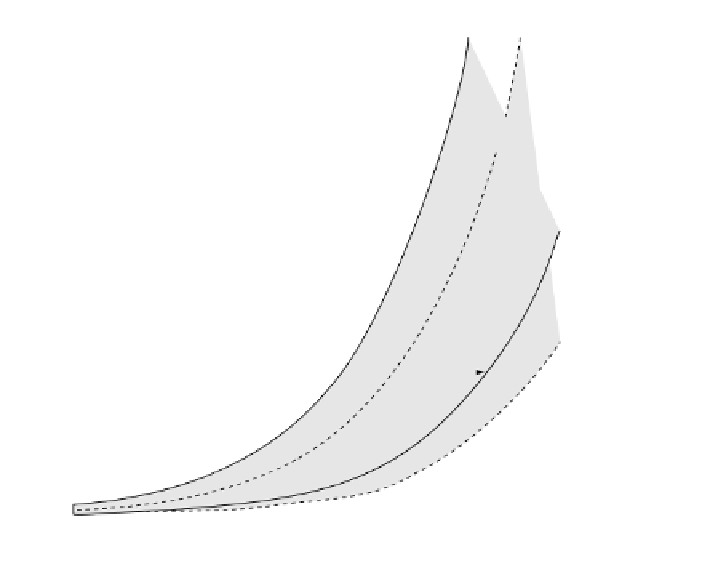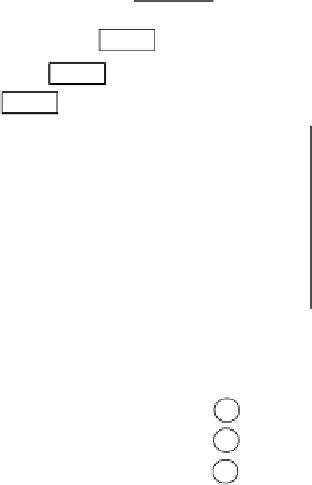Geoscience Reference
In-Depth Information
R = 0.2
j
= 30
°
1
j
= 30
°
j
= 55
°
j
= 55
°
= 90
j
°
0.8
j
= 90
°
1
1
j
= 55
°
0.6
Coriolis effect
could be ignored
regardless of latitude
1
R = 0.05
0.4
j
= 30
°
2
2
Coriolis effect in
horizontal circulation:
= is insignificant
= becomes significant
0.2
2
1
2
3
3
3
3
= is significant
0
1
10
100
Lagoon width, km
FIGURE 6.17
Range of significant-insignificant Coriolis effects as a function of velocities
and lagoon length scales (width) for three characteristic latitudes (ϕ = 30°, ϕ = 55°, ϕ = 90°).
by the Coriolis force, where
L
min
*
is defined as
686
sin
*
Lm
min
[]
≈
(6.57)
()
ϕ
On the other hand, water movement in different parts of a lagoon may adopt
different velocities such that the Coriolis force will only be important for movements
of certain velocity. Figure 6.17 illustrates the ranges of velocities influenced by the
Coriolis effect in lagoons of different scales. For lagoons of a given length scale, the
velocities below the shaded zone will be significantly influenced by the Coriolis effect
while the ones with velocity scales above the shaded zone are not influenced by it.
The position of shaded zone selected for the intermediate velocity range depends on
the latitude only. We can also see from Figure 6.17 that once a length scale
L
1
is
determined and the corresponding speed extremes
u
1
and
u
2
are determined for some
latitude
ϕ
1
, the same
u
1
and
u
2
will correspond to another length scale
L
2
at another
latitude
ϕ
2
. In other words, at any other latitude , there will be a length scale
associated with the same velocity interval where the Coriolis effect starts to be important.
One can find this new length scale
ϕ
2
L
2
L
2
for which the Coriolis parameter will influence







































Search WWH ::

Custom Search